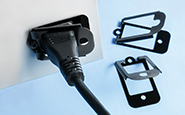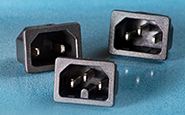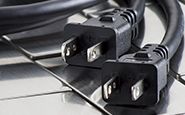Ferrules
|
| Certificates of Conformance | Declaration of Conformity |
|---|---|
| REACH | CE Conformity |
| ROHS |
A ferrule is an internal component that is used for better electrical contact in applications where the spread of bare strands could cause a problem. Interpower ferrules come in uninsulated wire ferrules, insulated wire ferrules, or double wire ferrules.
For part numbers see the Ferrule Selection Guide.
Ferrules come in two styles—insulated and uninsulated. The insulator is added to the “top” of the ferrules. The insulator helps to eliminate arcing in the assembly.
| Uninsulated Ferrule | Insulated Ferrule | Double-Wire Insulated Ferrule |
|---|---|---|
The ferrules are sized by metric measurement, so international wire sizes will fit properly in the ferrules. North American conductors are not sized metrically. The metric size of North American conductors is approximate. For example, 18 AWG conductor is approximately 0.82mm2. The size is between the metric 0.75 and 1.00mm2. A ferrule meant for 0.75 will be too small, so the next size larger will be needed. The 1.00 size ferrule will allow the 0.82 conductor to fit and permit 80% of the conductor to fill the ferrule space. Metric sizes do not include 2.00mm2. It moves from 1.50 to 2.50mm2. This affects 14 AWG conductors whose measurement is 2.09mm2.
Selecting a Ferrule
In selecting the kind of ferrule to use, there are several factors that should be considered.
- It needs to be determined whether it will be insulated or uninsulated for the application.
- It needs to be determined if the application requires a double-wire ferrule, which is an insulated version, and is designed to accept only two wires.
- If two AWG wires of the same size are being used, then the correct ferrule size can be determined by increasing the total wire size by three steps. For example, two 20 AWG wires (cross sectional area of 0.519mm2 each) are equivalent to a single 17 AWG/1.04mm2, so a 1.5mm2 capacity ferrule should be specified. In theory, two 20 AWG wires might fit into a 1.0mm2 capacity ferrule, but it is likely to be a tight fit.
- If using two metric wires, two 0.75mm2 wires will fit comfortably into a 2 x 0.75mm2 ferrule.
- The conductor size needs to be identified. There may be a need to convert from metric wire sizes to AWG sizes. (For reference: Metric conversion guide.)
- Insulated ferrules can be color coded, while uninsulated ferrules are not. The colors correspond to the rated wire size and each code uses different colors for individual sizes.
Securing Connections with a Ferrule
Using a ferrule can help to ensure that all of the individual wire strands will be conducting current properly.
If the wire is stranded, the individual strands may tend to move out of the way of the screw as it is tightened. An electrically acceptable connection may or may not exist.
One way to ensure a solid electrical connection is to crimp the ferrule. It is important that the ferrule is sized properly so that is slides onto the wire easily. The wire should fill at least 80% of the ferrule.
An insulated ferrule helps to minimize the chance that a loose strand will cause a short circuit.
Installation
For proper installation, Interpower recommends using a tool specifically designed for crimping ferrules.





